Using fashion for power: the Michelle Obama approach
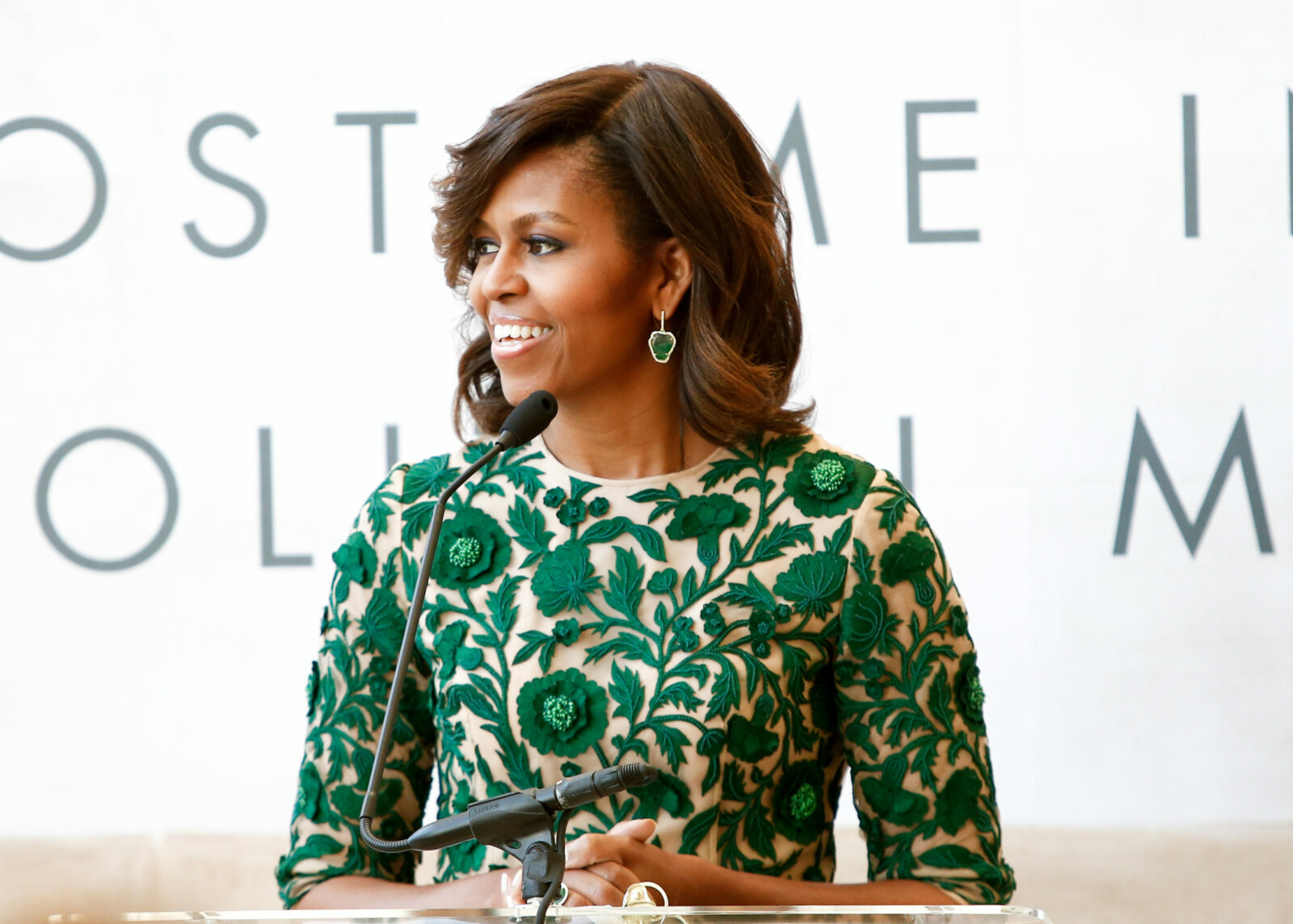
In her 2018 memoir “Becoming,” Michelle Obama issued out a warning that relates to presentation and style: “If you don’t get out there and define yourself, you’ll be quickly and inaccurately defined by others.” Michelle understood early on that sometimes her clothes mattered more to people than anything she had to say (as unfair and sexist as that may be).
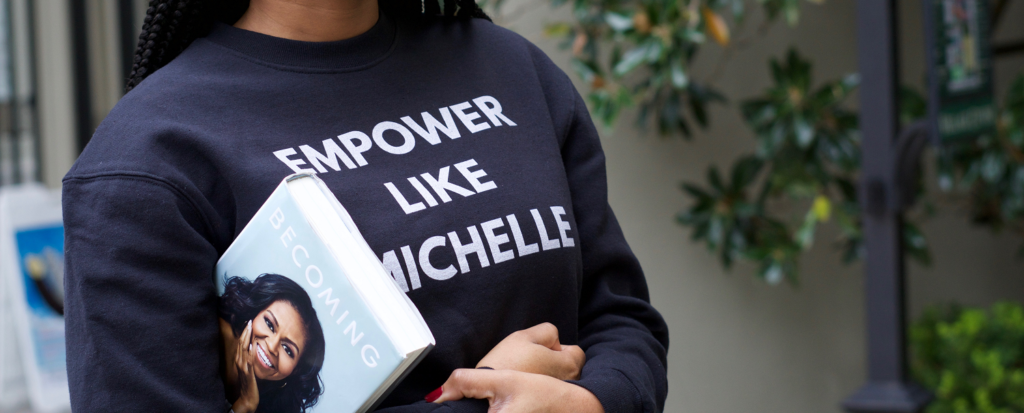
Thus, the former First Lady decided to reframe her situation and use fashion as an effective tool. She wrote, “If people flipped through a magazine primarily to see the clothes I was wearing, I hoped they’d also see the military spouse standing next to me or read what I had to say about children’s health.”
Michelle wasn’t the first… First Lady to experience this.
The Washington, DC Wardrobe
Mary Todd Lincoln once said, “People scrutinize every article that I wear with critical curiosity.” That’s right, the fashion police were offering up their commentary and criticisms, long before social media, the blogosphere, and red carpet pre-shows. Modern First Ladies still have every piece of their attire dissected, and there are whole industries around image-making and clothing commentary.
A lot of thinking goes into constructing a meaningful wardrobe, especially if you’re in the White House. There’s a need for professionals like stylists, buyers, personal shoppers, image consultants, etc. But there’s also risk to this. If a person in the public spotlight leans too heavily on this expertise, they may forget who they are! All these professions exist because everyone understands (consciously or subconsciously) that image = power.
Hillary Clinton once remarked, “If I want to knock a story off the front page, I just change my hairstyle.”
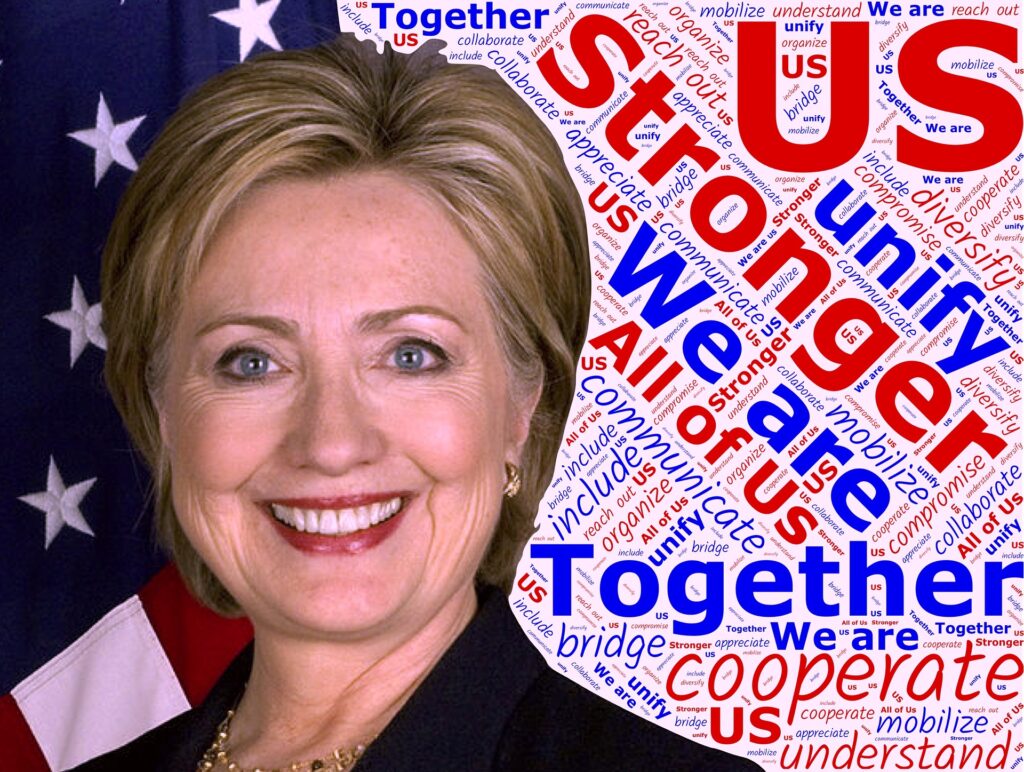
In her 2017 memoir “What Happened,” Hillary Clinton revealed that when she ran for the Senate in 2000 and for President in 2008, she made a conscious decision to stick to “a simple pantsuit, often black, with a colorful shell underneath,” which became almost like a uniform for her. And she gave a good reason for this: she likes pantsuits.
“They make me feel professional and ready to go,” she continued. “I also thought it would be good to do what male politicians do and wear more or less the same thing every day.”
Despite these efforts, Hillary Clinton has been criticized for her fashion choices throughout her political career. But the world is changing.
This was especially evident in 2014, when Jimmy Fallon told a joke on “The Tonight Show.” Hillary’s daughter, Chelsea Clinton, was pregnant at the time. Fallon joked, “If it’s a girl, it’ll get some of Chelsea’s old hand-me-downs, and if it’s a boy, it’ll get some of Hillary’s.”
There were audible boos from the audience. Fallon seemed surprised by this reaction. “It wasn’t that hard of a joke,” he said. “What’s the big deal?”
Jessica M. Goldstein, a writer for the now defunct progressive website ThinkProgress, mocked the underlying rationale of his joke: “Ha! Get it? Because Hillary is so manly in those man-clothes she’s always man-wearing, man.” She argued that it made Fallon seem out-of-touch with the values of his younger audience, and suggested that a joke about heteronormative clothing choices would have done better in 1995.
As the First Lady, Michelle Obama also received a lot of criticism. She decided not to be thin-skinned about it.
She once said: “One of the lessons I grew up with was to always stay true to yourself and never let what somebody else says distract you from your goals. And so when I hear about negative and false attacks, I really don’t invest any energy in them, because I know who I am.”
The Importance of Fashion Friends
Michelle Obama has always been a strong personality with a strong personal style. Even though she plays it down sometimes. Many fashionistas ask their close friends what looks good on them, and Michelle is no exception. She has people who she trusts.
In “Becoming,” she wrote: “As a working mother, I’d really been too busy to put much thought into what I wore. During the campaign, I’d done most of my shopping at a boutique in Chicago where I’d had the good fortune of meeting a young sales associate named Meredith Koop.”
After the election, Michelle convinced Meredith to move to Washington to help her with the demands of maintaining such a high-profile wardrobe. Meredith Koop has been her stylist since 2010 and became a close friend, too. For the stylists/consultants out there: This is the power of being in the right place at the right time.
Even though Obama’s outfits always seemed to be elegant, on-point, and effortless, a lot of effort secretly went into constructing a great look.
Michelle wrote: “Optics governed more or less everything in the political world, and I factored this into every outfit. It required time, thought, and money—more money than I’d spent on clothing ever before. It also required careful research by Meredith, particularly for foreign trips. She’d spend hours making sure the designers, colors, and styles we chose paid respect to the people and countries we visited.”
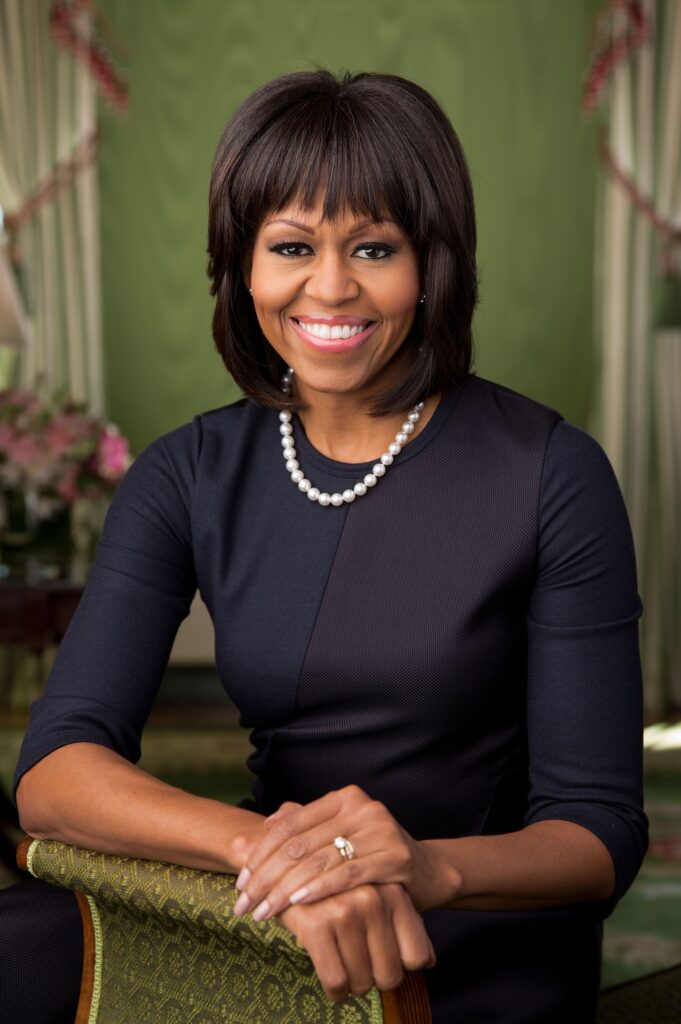
Michelle Obama always looked like a million bucks and if some of you are wondering if your tax dollars were not squandered, don’t you worry. Michelle clarified that she paid for all her own clothes and accessories, “with the exception of some items like the couture-level gowns I wore to formal events, which were lent to me by the designers and would later be donated to the National Archives, thus adhering to White House ethics guidelines.”
Fashion is playful and sometimes it seems like whoever has the most fun playing its games, wins. We all have seen people who look fabulous, and seem like they are wearing designer clothes head to toe. Oftentimes, those individuals might actually wear only one piece of attire that’s actually luxury and the rest can be mass market or thrifted. It pays off to experiment and play with your wardrobe.
Michelle Obama explained: “I’d match a Michael Kors skirt with a T-shirt from Gap. I wore something from Target one day and Diane von Furstenberg the next. I wanted to draw attention to and celebrate American designers, especially those who were less established, even if it sometimes frustrated the old guard, including Oscar de la Renta, who was reportedly displeased that I wasn’t wearing his creations. For me, my choices were simply a way to use my curious relationship with the public gaze to boost a diverse set of up-and-comers.”
A Call to Arms
In her official portrait, Michelle Obama posed in a sleeveless Michael Kors black gown, finished with two rows of refined pearls. But not everyone liked that look.
“I wore a sleeveless aubergine dress to Barack’s address to the joint session of Congress and a sleeveless black sheath dress for my official White House photo, and suddenly my arms were making headlines,” wrote Michelle in her memoir.
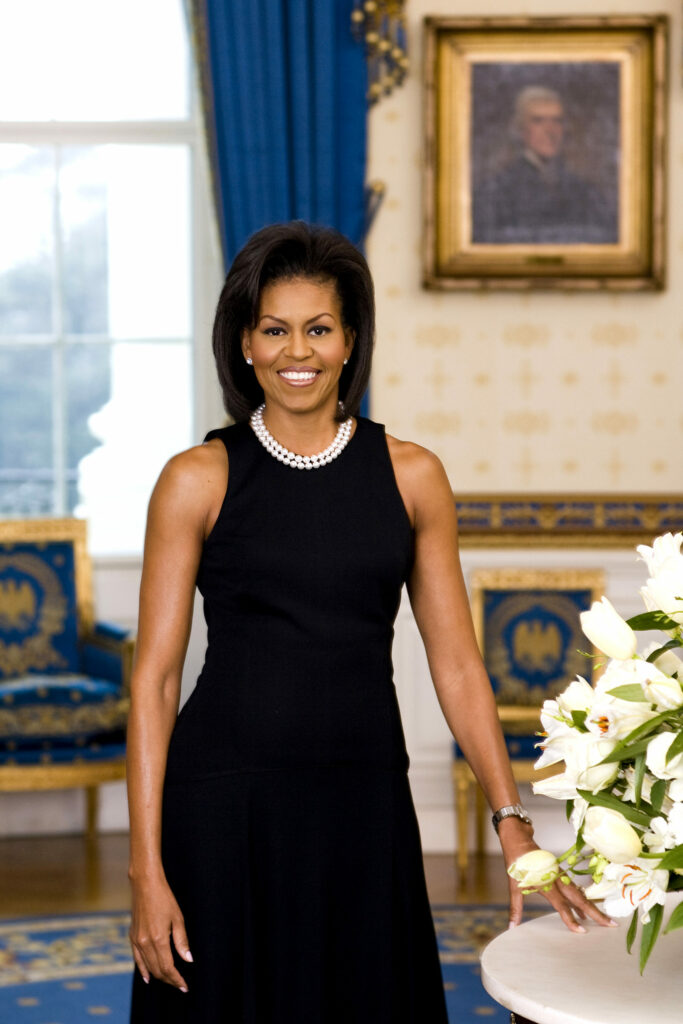
Her toned arms always sparked a bit of controversy and discussion, in a way that wasn’t necessarily fair. As Vanity Fair pointed out, Jackie Kennedy looked similar during a visit to India’s Taj Mahal in 1962. She wore a sleeveless dress of the same silhouette, except instead of black, it was green with a baby blue leafy pattern. The look was finished with 4 rows of green beads, as opposed to Michelle’s strings of pearls.
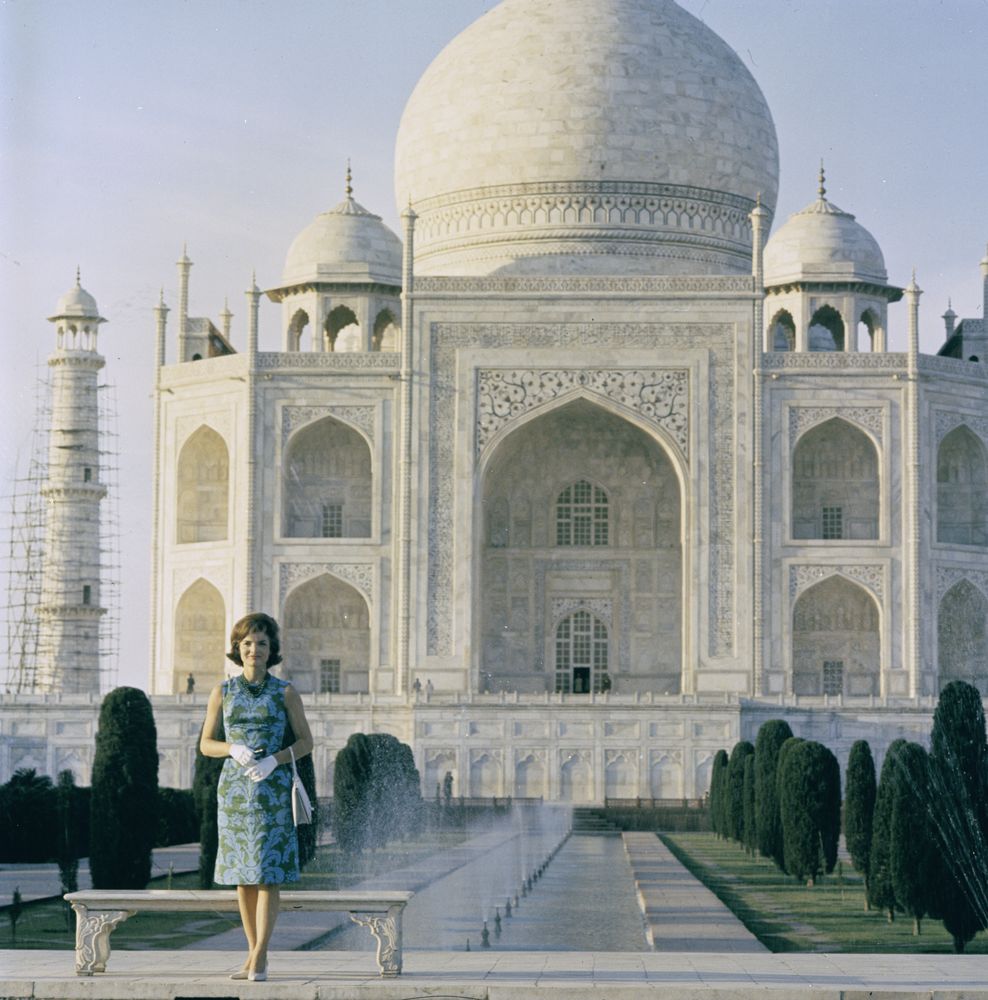
Looking through archival photos from that 1962 Presidential trip, I realized that almost every dress Jacqueline Kennedy wore was sleeveless.
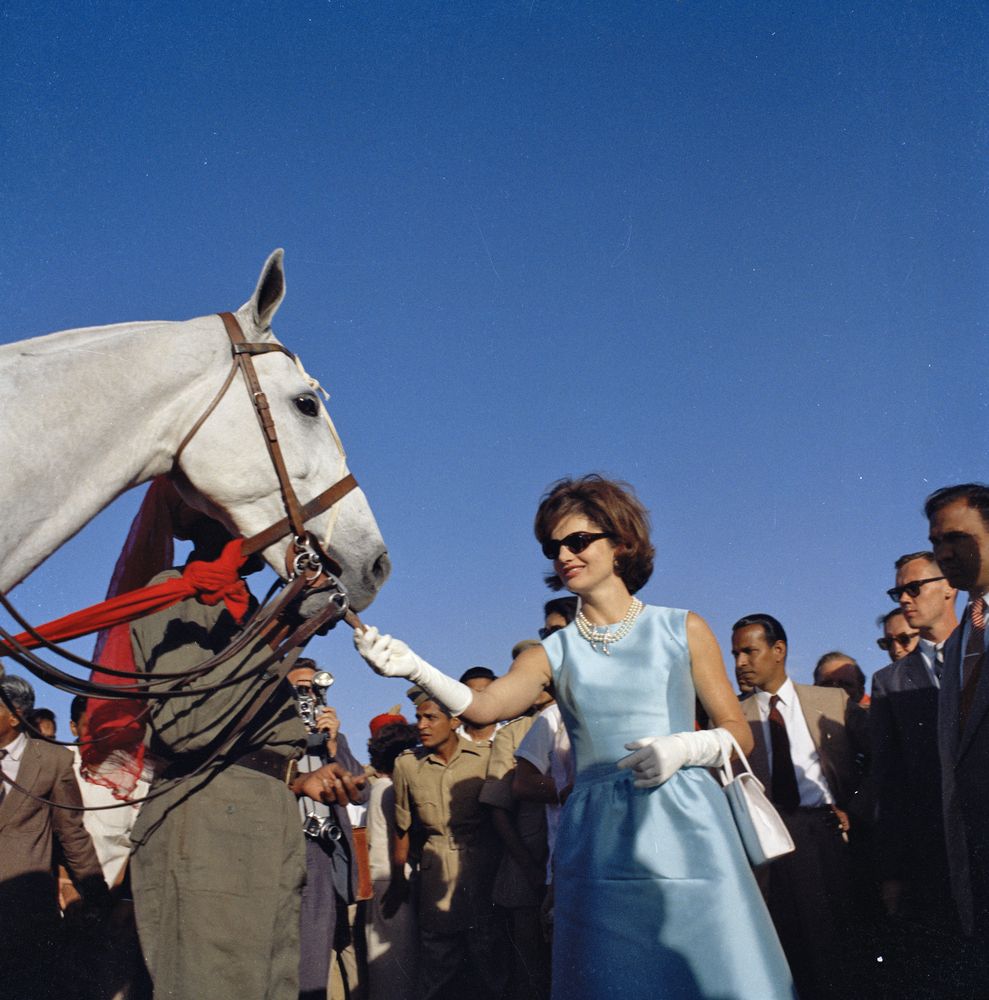
So why did Americans accept this kind of dress in the 60s but not nowadays? Was it about race, or the way that the First Ladies acted? Was America not ready for a strong personality with strong arms, who grew up working-class and became the third First Lady with a master’s degree? Was America perplexed by her ability to show her soft and feminine side as a caretaker, while also telling the world that she was in charge? She was not just a mom, after all, she was “Mom-in-Chief” as she called herself.
According to Carl Anthony, a historian for the National First Ladies’ Library, Michelle is actually worlds apart from Jackie Kennedy, who came from a more privileged background.
Michelle has mentioned race as being a factor in her stylistic choices. She wrote: “As a black woman, too, I knew I’d be criticized if I was perceived as being showy and high-end, and I’d also be criticized if I was too casual.”
In her wittily headlined article “Michelle Obama’s right to bare arms,” Vanessa Jones also made the point that Michelle wasn’t the first and only First Lady to go sleeveless. Mamie Eisenhower also picked a sleeveless pink dress for her official portrait.
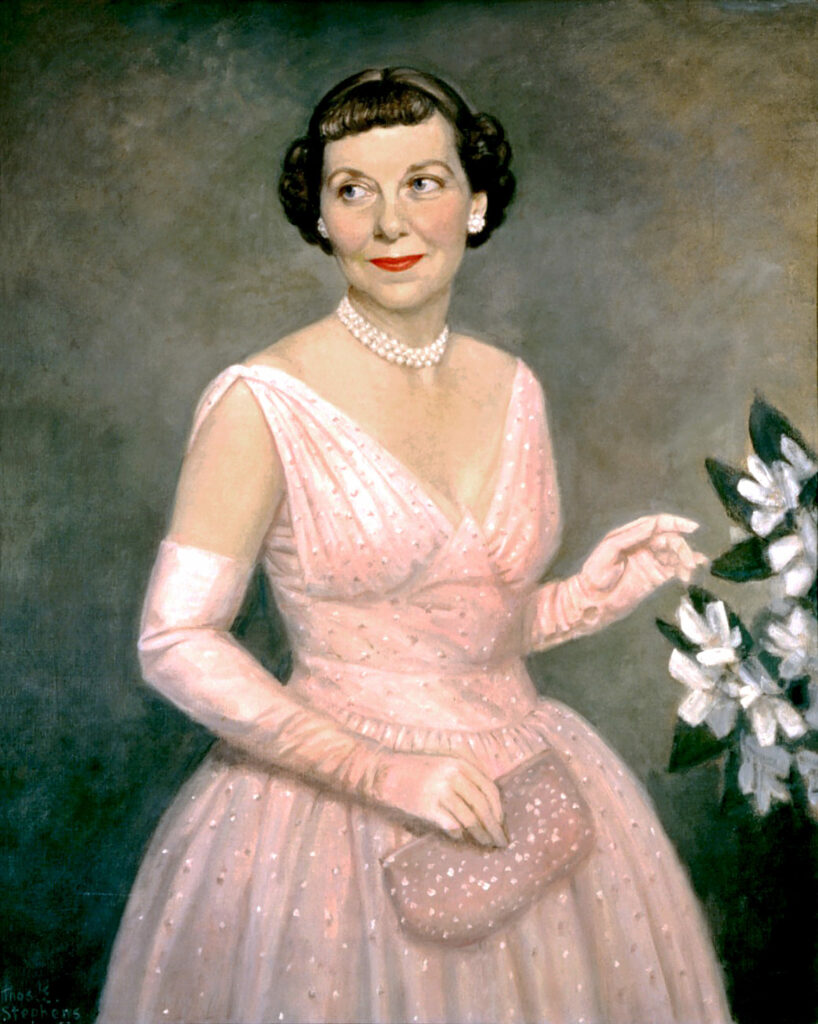
Vanessa Jones waxed poetic about Michelle: “And then, there are the arms themselves, strong and defined, muscular and elegant, as if for the duration of the campaign she’d lugged weights in her carry-on bags along with voters’ not-insubstantial hopes for change.”
But why should it be so indecent to show your arms, when your mission as the First Lady is fitness, health, good nutrition and fighting against obesity? Teaching others about eating healthy and staying active, it seems natural to show that you’re practicing what you preach.
A Blooming Sense of Style
Apart from her sleeveless garbs, Michelle wasn’t afraid to wear flowery dresses, oftentimes in bold colors, that became another signature style of hers. She looked stunning in a Moschino purple floral shirtdress during a campaign rally at the University of North Carolina Asheville on May 2, 2008.
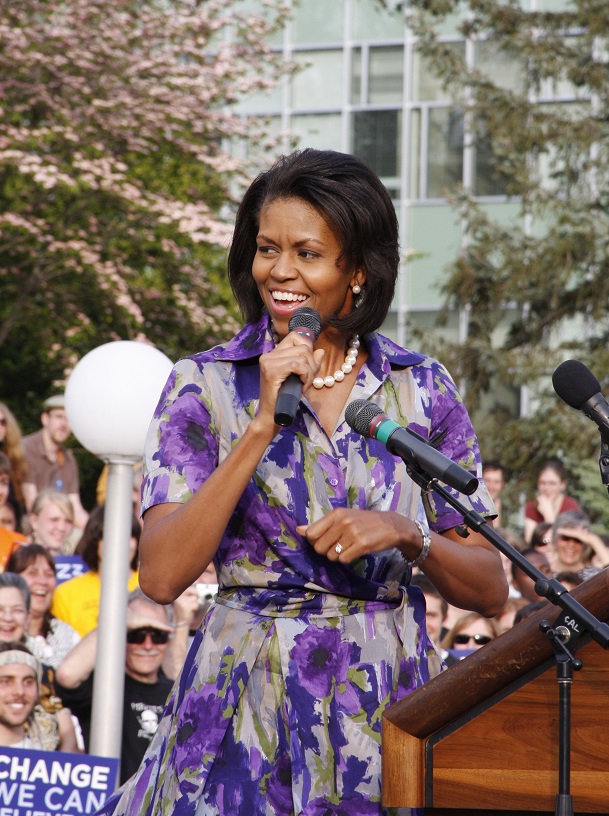
See, there is nothing wrong with rewearing what you already have in your closet. Michelle Obama wore the same dress when campaigning in Miami, Florida on November 1, 2012 (five days before Election Day). This dress made me think of van Gogh’s Irises or Monet’s Lilac Irises.
These flowery dresses may have helped Michelle to walk a thin line, and achieve an often complicated purpose.
“When it came to my choices, I tried to be somewhat unpredictable, to prevent anyone from ascribing any sort of message to what I wore. It was a thin line to walk. I was supposed to stand out without overshadowing others, to blend in but not fade away,” writes Michelle in “Becoming.”
Another excellent choice of the First Lady, within this same flowery dress style, was a Tracy Feith black dress, with green leafy ornamentation also covered in fine purple lupins. Mrs. Obama wore it for a wreath-laying ceremony at Arlington National Cemetery in 2012. When I looked into its symbolism, I found out that the lupin flowers stand for happiness, as they bring inner strength to recover from trauma. So, this dress was not only delightful, it was also very well thought-out.
As Maria Pinto, a designer from Chicago who works with Michelle, once said: “her style is thought-out, but it’s not contrived or deliberate. It’s a natural process for her.” (Pinto was the one who created that silk crepe close-fitting dress with a pleated neckline, which Michelle wore when she met Laura Bush.)
In May 2014, for the opening of the Costume Center at the Metropolitan Museum of Art, Michelle wore a Naeem Khan beige dress with a layer of green lace over it. The lace was covered in beautiful green flowers and embodied with green beads.
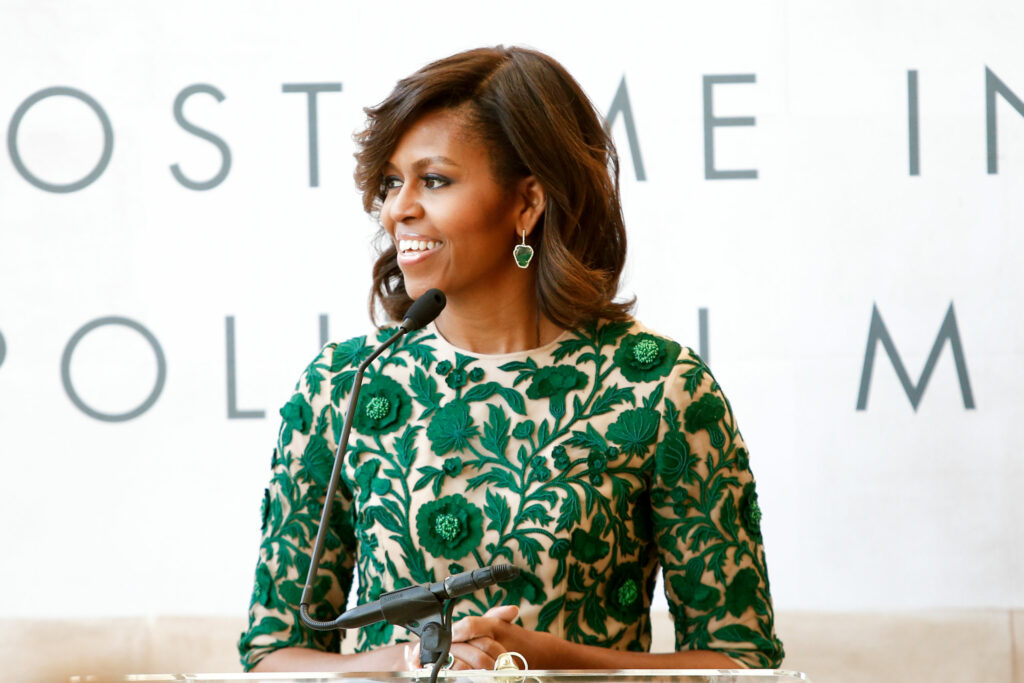
Another one of my favorites is the Dries Van Noten printed silk dress that Michelle wore for the Presidential Medal of Freedom Ceremony in the White House in November 2016. But it’s hard to have favorites when it comes to Michelle Obama’s closet. Every time she makes a public appearance, she looks simply gorgeous and all eyes are on her.
There’s a long history of fashion playing a role in political power. And through her elegant and sometimes defiant choices, Michelle wielded her power masterfully. But she also stayed mindful of the emotional inner lives of women. In 2009, she told Vogue: “First and foremost, I wear what I love. That’s what women have to focus on: what makes them happy and what makes them feel comfortable and beautiful. If I can have any impact, I want women to feel good about themselves and have fun with fashion.”
In that same Vogue article, Oprah Winfrey described Michelle as “an authentically empowered real woman” who is modern and relatable. Oprah explained, “[She’s] bringing a sense of connection and accessibility to that position that no nation has ever witnessed.”
Finally, as Kate Betts points out in her book “Everyday Icon: Michelle Obama and the power of style,” the essence of Mrs. Obama’s style is “her innate ability to finesse the difference between what Eleanor Roosevelt observed was the ‘person’ and the ‘persona’—the private self and the projected public image.” The author also pointed out that Michelle “resolved one of the contradictions that have plagued working women in America for the better part of the century: the mistaken but deeply entrenched belief that style and substance define two mutually exclusive paths, and that a woman has to choose one or the other.”
In other words, she’s all of us. Maybe it’s time to go sleeveless and flex.
